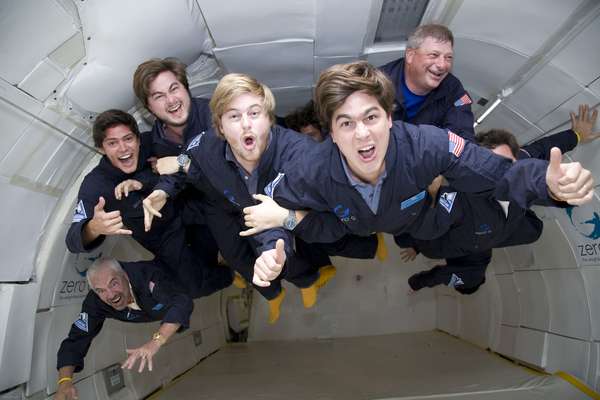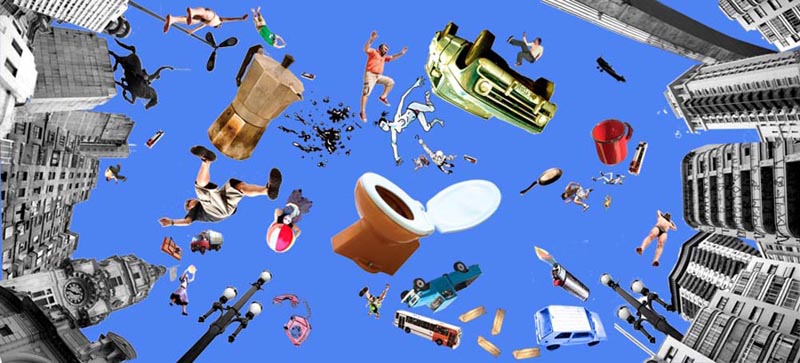 Of the four fundamental forces of the universe, curiously, the weakest is the one that is manifestly most present throughout our lives – the force of gravity (the rest are the electromagnetic force, the strong nuclear and the weak nuclear).
Of the four fundamental forces of the universe, curiously, the weakest is the one that is manifestly most present throughout our lives – the force of gravity (the rest are the electromagnetic force, the strong nuclear and the weak nuclear).
In virtually any human activity, gravity constrains our movements and actions and constitutes an inescapable presence in any terrestrial context.
More: it remained constant long before the first human walked the earth and will continue to do so until the last one perishes.
Being not only pervasive but also highly regular, an animal that takes its effects into account will have obvious advantages, as it will be able to anticipate its consequences and adapt its behavior to a dynamic world subject to the laws of physics.
Indeed, a growing body of investigations has, in recent decades, accumulated evidence in favor of our brains containing sophisticated mechanisms that seem to calculate and predict the effects of Earth's gravity on moving objects, called “Internal Gravity Models”.
These seem to play a prominent role in our perception, acting in a similar way to a computer simulation: input data from our senses (in particular from sight, but not only) provide initial parameters about the position and speed of an object , on the basis of which gravity's internal models compute its future trajectory.
This process is even more relevant if one takes into account that the transmission of impulses along neuronal fibers and cells is not instantaneous – for example, between the moment when light reflected by any object hits the retina in our eyes until the By the time the visual areas of the cortex respond to this stimulation, about 100 milliseconds (0,1 seconds) may pass.
Although, at first glance, this is a negligible interval, a small example will convince you otherwise: for a goalkeeper trying to successfully intercept a soccer ball moving at 20 meters per second (the maximum recorded approaches 35 m/s), a time error of 100 milliseconds means that when the brain signals the ball's position, it is actually 2 meters ahead! And this without considering the time needed to prepare and execute an adequate response.
That we can, within reasonable limits, successfully interact with the world around us without gross synchronization errors is therefore noteworthy. And yet, if that weren't so, it's hardly conceivable that we could have evolved as a species to even, among other activities, play soccer.
In the laboratory, and globally, these models are typically studied by requiring participants to perform a certain action, of a motor or perceptual nature, in front of a moving object (real or shown in a virtual environment) whose dynamic parameters are carefully controlled.
 In an already classic study (McIntyre, Zago, Berthoz, & Lacquaniti, 2001), the participants, a group of astronauts aboard the shuttle Columbia (Neurolab mission), and therefore, in a weightless environment, were supposed to intercept a small thrown ball. in a “downward” movement.
In an already classic study (McIntyre, Zago, Berthoz, & Lacquaniti, 2001), the participants, a group of astronauts aboard the shuttle Columbia (Neurolab mission), and therefore, in a weightless environment, were supposed to intercept a small thrown ball. in a “downward” movement.
Previous studies have shown that, on Earth's surface, the arm muscles tend to contract about 200 milliseconds before the ball hits the hand, regardless of how high it is released.
As a free-falling object accelerates towards the center of the earth, a constant time for preparatory muscle contraction implies that it can be performed when the ball is at different distances from the hand, suggesting that somehow humans can foresee with great temporal precision the moment of interception of the ball.
In the case of absence of gravity, the ball, instead of accelerating, moved with a constant speed (in this study, the ball was fired “from the ceiling” of the shuttle at an adequate speed).
The results showed that the muscles of the arms contracted significantly earlier in relation to the ball's trajectory, as if the astronaut's brain anticipated an acceleration of the ball, congruent with Earth's gravity, although this was absent.
In a way, this result suggests that gravity is so embedded in brain functioning that, even escaping its physical effects, we take it with us in the form of a neuronal model.
Today we already have several evidences that contribute to this basic idea and some confidence in the cortical location where a possible internal model of gravity can be instantiated - in the so-called parietotemporal junction (an associative zone, with connections to the vestibular apparatus and motor areas) .
A number of researchers are now actively involved in clarifying the workings of these internal models, and this is a rapidly growing topic of study from which, we hope, new discoveries will emerge in the near future.
Author Nuno Alexandre de Sa Teixeira
Science in the Regional Press – Ciência Viva
Nuno Alexandre de Sa Teixeira he graduated in Psychology from the Faculty of Psychology and Educational Sciences of the University of Coimbra, and a Ph.D. in Experimental Psychology from the same institution.
He worked as a PhD researcher at the Department of General Experimental Psychology at the University Johannes-Gutenberg, Mainz, Germany, and later at the Institute of Cognitive Psychology at the University of Coimbra.
He is currently a PhD researcher at the Center for Space Biomedicine at the University of Rome 'Tor Vergata', Italy.
His scientific work has focused on the study of how physical variables (in particular, gravity) are instantiated by the brain, as “internal models”, to support perceptual and motor functions in the interaction with the world.
Thus, his interests depart from the hinge between thematic areas such as the Psychology of Perception, Psychophysics and Neurosciences.


















Comments